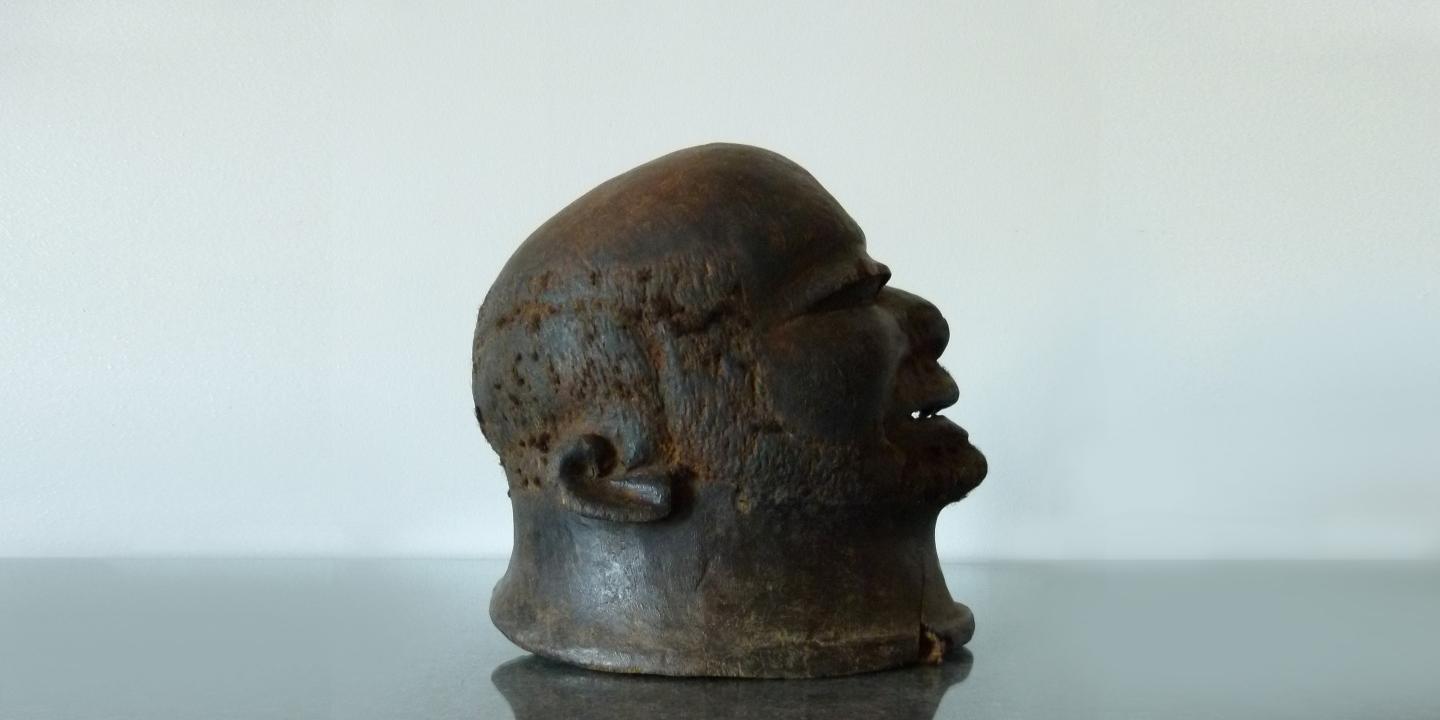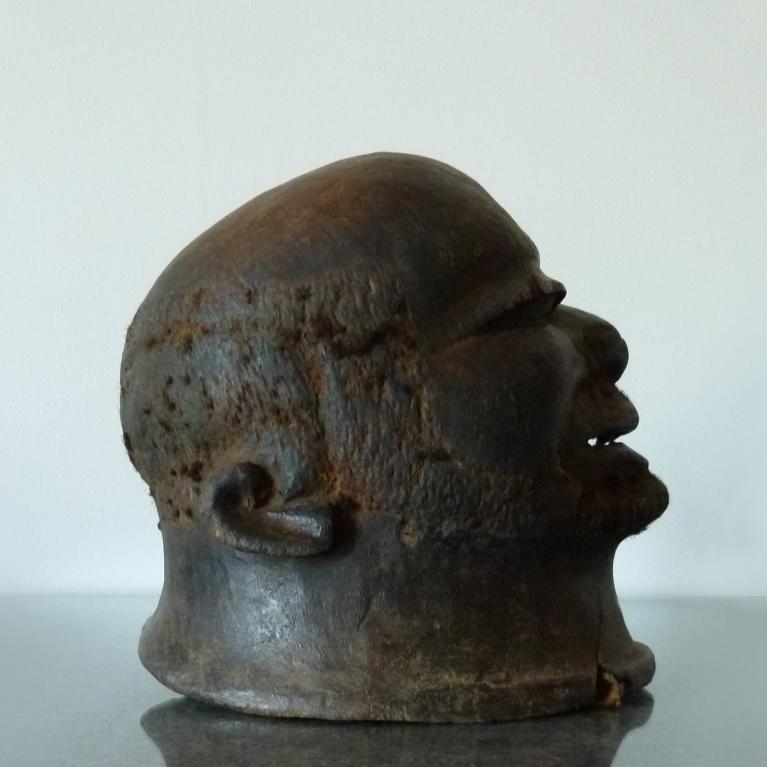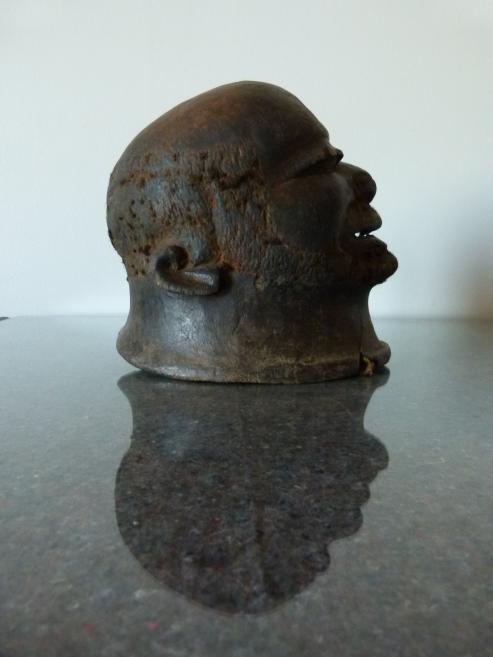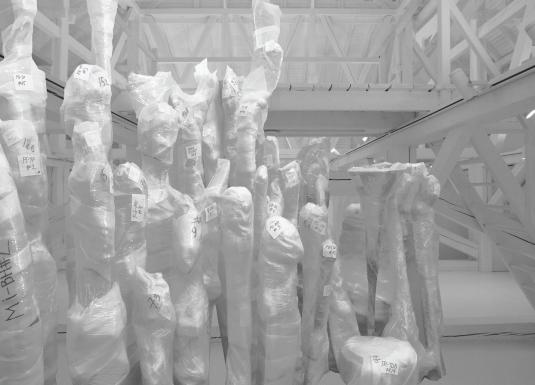Helmet Mask. Makonde ethnic group, Tanzania
Makonde helmet masks include strong, realistic, portrait-like features and real human hair applied with beeswax. Masks like these represented an ancestral spirit in initiation ceremonies and served to express their moral code.
The Makonde first came to the region in the 18th and 19th centuries seeking refuge from the slave trade, and they have continued to experience a great deal of cultural transformation and change over the past century, but especially during the Portuguese Colonial period from 1920 to 1974. This had a major impact on their society and moulded much of their art into what is seen today.
During initiation, both girls and boys are taught how to make and perform with masks. Traditionally, the dances were performed by adult spiritual leaders to celebrate initiation rites that marked the entrance of young boys and girls into new stages of their lives, where they were taught the skills of adulthood, traditional songs, dances, costumes, and cultural secrets. Masks were used to honour the recently deceased.
The masks themselves are carved in great secrecy away from the community. All males are taught the skill of woodcarving, and while they take pride in their work, they do not consider themselves professional artists.




